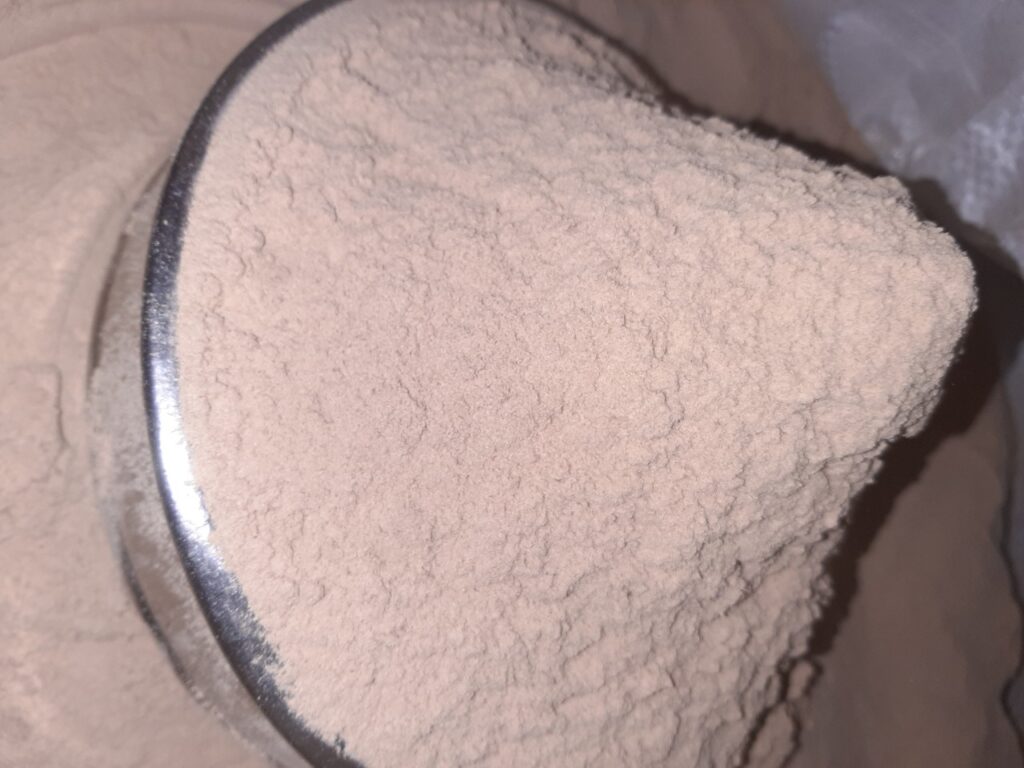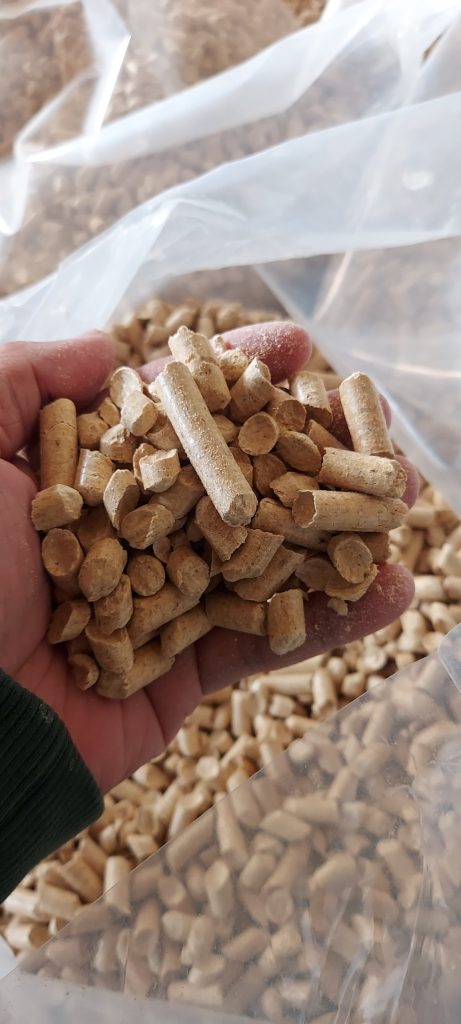BACKGROUND
The purpose of this study was to reduce the delivered fiber cost to wood-plastic composite (WPC) manufacturers. The low density and higher volume of the wood flour make longer distance transportation disadvantageous in terms of cost. While the production cost of wood pellets is slightly higher than wood flour, a higher weight of pellets can be transported via truck trailer due to a bulk density roughly three and half times higher than wood flour. This study explored the utilization of a compacted wood flour, i.e., wood pellets to manufacture WPCs and compare performance characteristics against WPCs manufactured using conventional wood flour. Then, the physical and mechanical properties of the resulting composite products were determined.

MATERIAL PREPARATION
Northern White Cedar (Thuja occidentalis), Eastern White Pine (Pinus strobus), Eastern Spruce-Balsam Fir (Picea rubens-Abies balsamea) and Red Maple (Acer rubrum) mill residues (planar shavings, sawdust, and small chips) were obtained from local sawmills in Maine. A Bliss Eliminator Hammermill with 0.5 mm screens was used to reduce the mill residues, then classified using a Gilson screen shaker at 20, 40, 60, 80, and 100 mesh sizes. The wood flour for each species collected at the 40-mesh screening (425-850 micron) was used as the feedstock for both wood pellet and control WPC sample production.
PRODUCTION
Pellet Manufacture
A Lawson Mills plate-type Pellet Mill (LM72A) was used for the production of wood pellets. For each species, pellets were manufactured using the 40-mesh size fraction, with the moisture content of the wood flour maintained between 10 and 15% to allow for optimal pellet formation.
WPC Manufacture
For each wood species, 40-mesh wood flour and wood pellets manufactured from the same flour were oven dried and used as the fiber source. The wood pellets were ground back to a powder using a Brabender knife grinder.

CHARACTERIZATION
Particle Dispersion
WPC samples were prepared using a rotary microtome, and viewed using a Zeiss NVision 40 scanning electron microscope (SEM) to study particle disperion in the samples. Particle sizes were calculated and categorized using digital imagry. Through analysis, it was inferred that WPCs made from wood pellets had better particles’ dispersion than WPCs made from the wood flour (Figure 1).
WPC Density
Density for the 16 WPC formulations was determined in accordance with ASTM D792. The average density of PP is 900 kg/m3 . Figure 2 shows the density of WPC samples of wood flour and pellets in different formulations. For all sample formulations, the density observed was higher than 900 kg/m3 . For all cases, WPCs made from wood pellets with MAPP showed a higher density. The increase in density of WPCs made with wood pellets is because of ground wood pellets being denser than the wood flour used.
Tensile coupons were evaluated in accordance with ASTM D638. WPCs manufactured using pellets or flour had no significant difference in the tensile values of the composite products (Figure 3a;3b). Flexural bending was performed in accordance with ASTM D790. Figure 4a and 4b shows the wood filler (wood flour or pellets) did not influence the flexural strength or stiffness. Izod impact resistance was determined in accordance with ASTM
CONCLUSIONS
Vietnamese wood flour is renowned for its high quality and is considered an ideal raw material for producing WPC (Wood Plastic Composite). With abundant forest resources, Vietnamese wood flour is sourced from both hardwood and softwood with excellent physical and mechanical properties, contributing to the creation of WPC products with high durability, moisture resistance, abrasion resistance, and strong UV protection. The production process of wood flour in Vietnam adheres to strict standards, ensuring a fine and consistent texture, which enhances the bonding ability of WPC and results in smooth, aesthetically pleasing surfaces. Thanks to these advantages, Vietnamese wood flour is increasingly favored by WPC manufacturers both domestically and internationally, becoming a top choice for enhancing the quality and value of WPC products.
• The physical and mechanical properties of WPCs made from either the wood flour or wood pellets were similar.
• Feedstock distribution was similar for both wood flour and pellet formulated WPCs.
• Dispersion was greater for WPCs with pellets than with wood flour.
• MAPP improved the physical and mechanical properties of WPCs for each wood feedstock and wood species.
• On average, WPC samples of spruce-fir species possessed the best properties.
